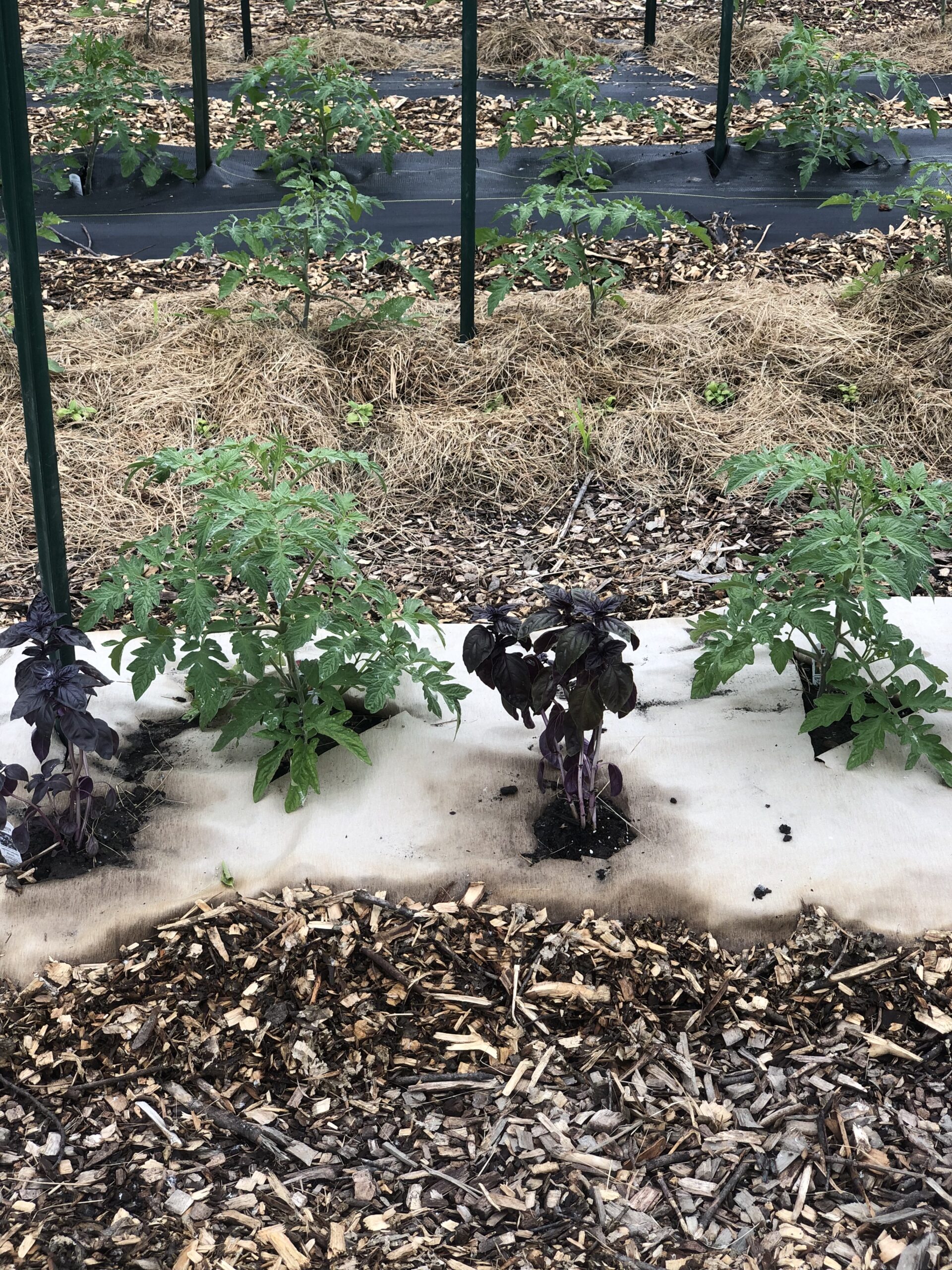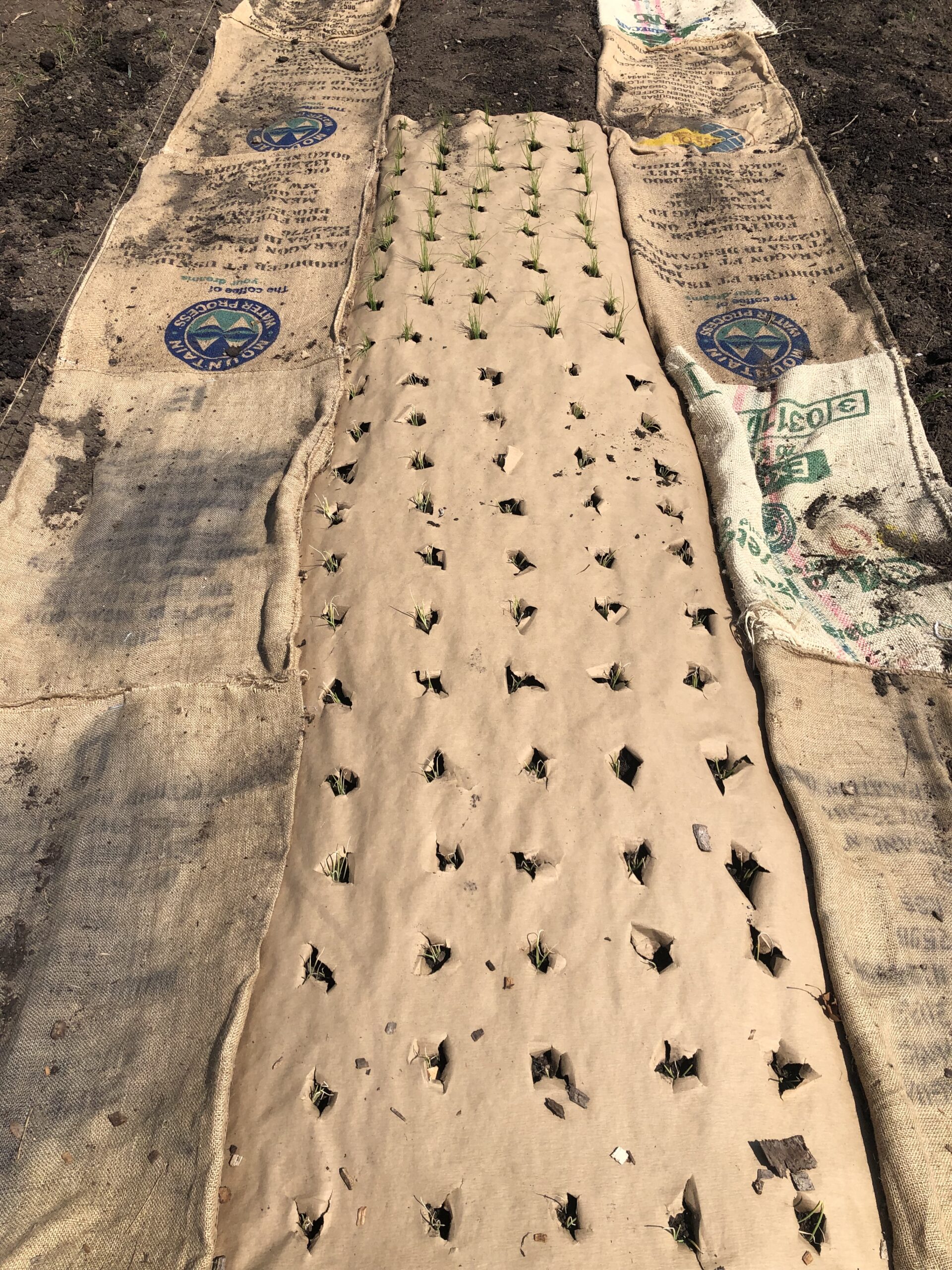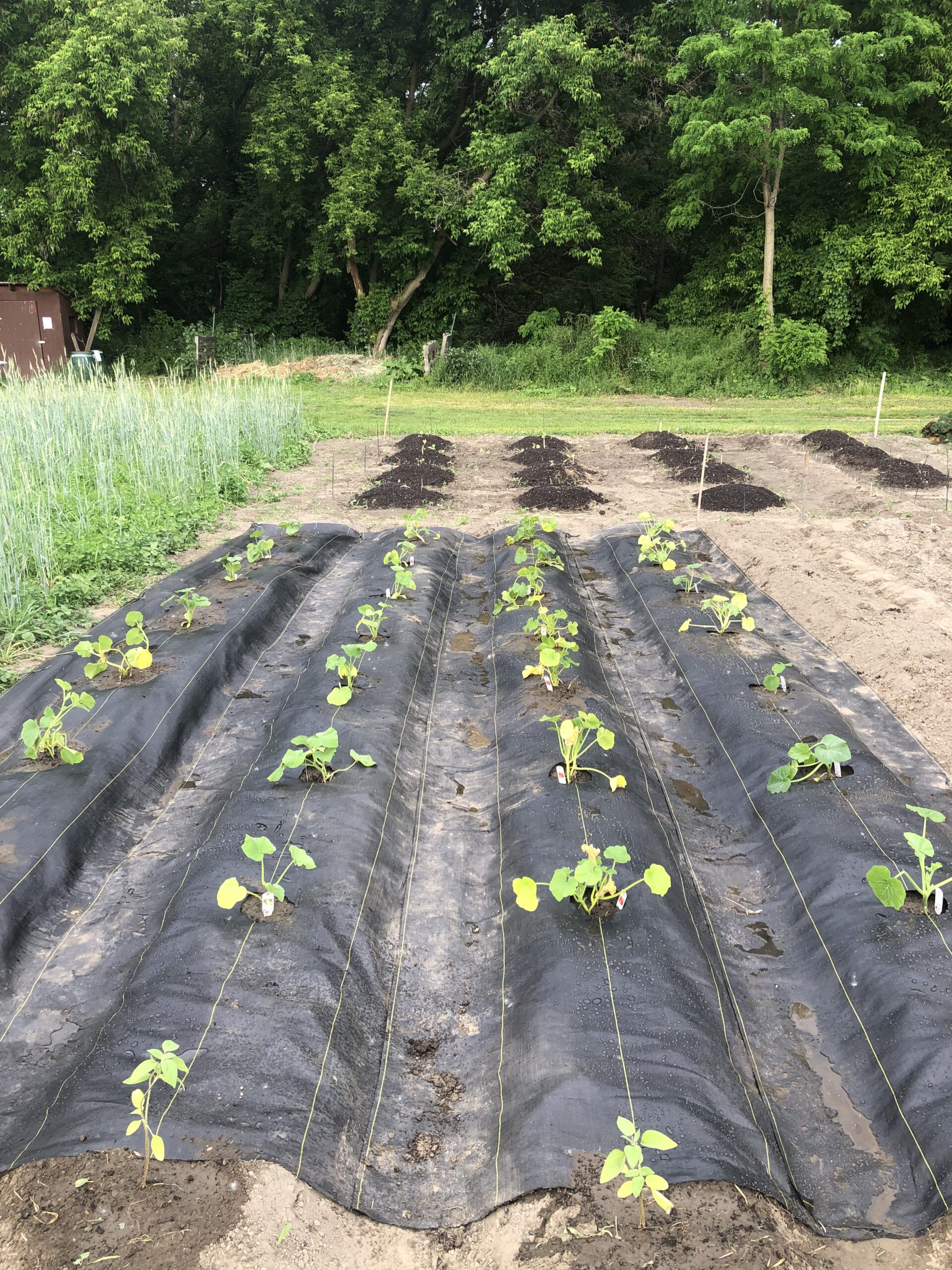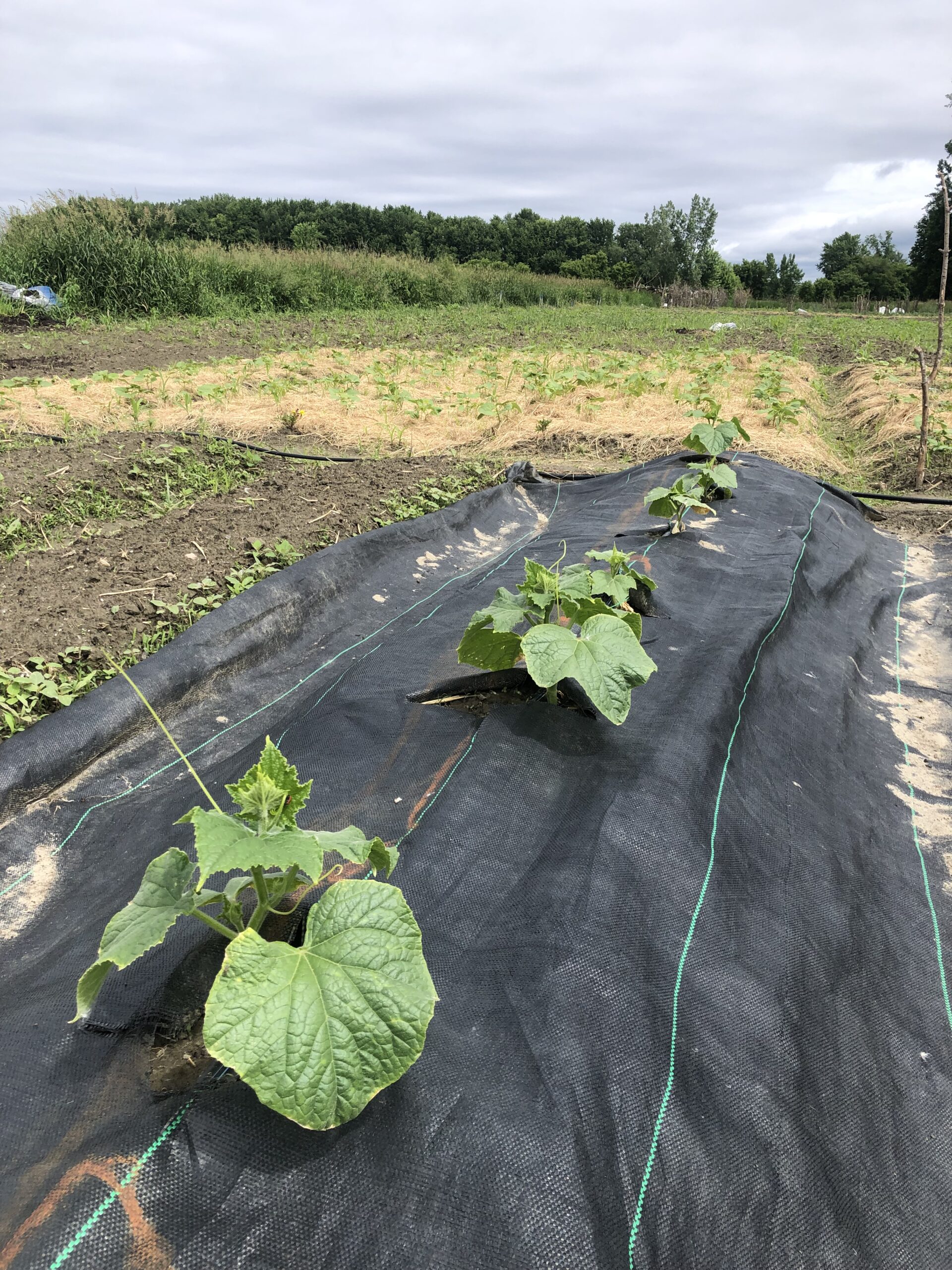One way we are exploring themes of soil health, climate resiliency, and agroecology at the garden-scale is by experimenting with different mulching options for covering garden beds. We see organic farms all around us using extensive amounts of plastic mulch and we’ve wondered about the benefits at the garden scale. We are also concerned at how “plasticulture” is so prevalent and worry about microplastics in our agricultural soils. Whether or not we should use plastic in our teaching gardens has been an ongoing conversation among VGN staff members. This year we’ve opted to avoid using one-time use plastic mulch. Instead, we are relying on reusable woven weed mat, biodegradable paper mulch, and hay mulch.
There are benefits and disadvantages to all mulches, and many variables that may make one mulch ideal for one location or crop, and a nuisance for another. We’ll report back on our experience with different mulches as the season progresses.
Woven weed mat: this is a very common material used on farms. We recognize the practicality of using woven weed mat, so we’ve decided to be selective about how and when we use it at the garden-scale. For the past three years we have reused discarded weed mat from farms at the Intervale. It’s been our way of extending the life of an otherwise disposable plastic material discarded by farms, and repurposed at our garden-scale. However, after losing most of our reused weed mat to the July 2023 flood, we purchased our first roll of brand new woven weed mat this spring – and we plan on reusing it for many years. We burned holes using a heat knife to seal the plastic and prevent fraying edges. And we are exclusively using plastic weed mat on our winter squash beds and on some tomato beds.
Paper mulch: as more and more gardeners talk to us about using paper mulch, we’ve been curious to try different brands. A couple of years ago we experimented with a thick black paper mulch that was not to our liking. The paper ripped easily, changed colors in the sun, and water seemed to bead up and roll off the paper. We ended up pulling up that thick black paper mulch in early summer. Fast forward to this spring and we have been very content with Fedco’s EcoMulch. The “crepe” finish does indeed mold itself nicely to the bed and we found it easy to poke holes into the paper without causing extensive rips. We currently have paper mulch on onion, scallion, tomato, flower, and herb beds.
Stray or hay mulch: we go through many bales of hay/straw each season. We’ve found that the quality, seed content, and price of bales varies enormously. We are very grateful that this year’s supply of hay bales in Burlington Area Community Gardens is exceptionally perfect – no seeds and easy to break apart the flakes. We use straw/hay to mulch most of our garden beds. But sometimes weeds do poke through the mulch and it becomes quite tedious to weed. We don’t get any heat retention by using straw/hay mulch, but we do feel peace of mind knowing that it adds organic matter to the soil, instead of adding microplastics to our agricultural lands.

Tomato beds at Seedsong Collective Garden covered with paper mulch (bottom), hay mulch, and woven weed mat (top).

Paper mulch at the Family Room Collective Garden, with tiny scallions and onions poking through. We use burlap as a pathway mulch to welcome young kids with bare feet into the garden.

Woven weed mat at the Seedsong annex plot – we’ve expanded the collective garden by renting a tilled plot to grow storage crops such as winter squash, sweet potatoes and solanum potatoes. We are able to manage very high weed pressure with the help of this weed mat.

